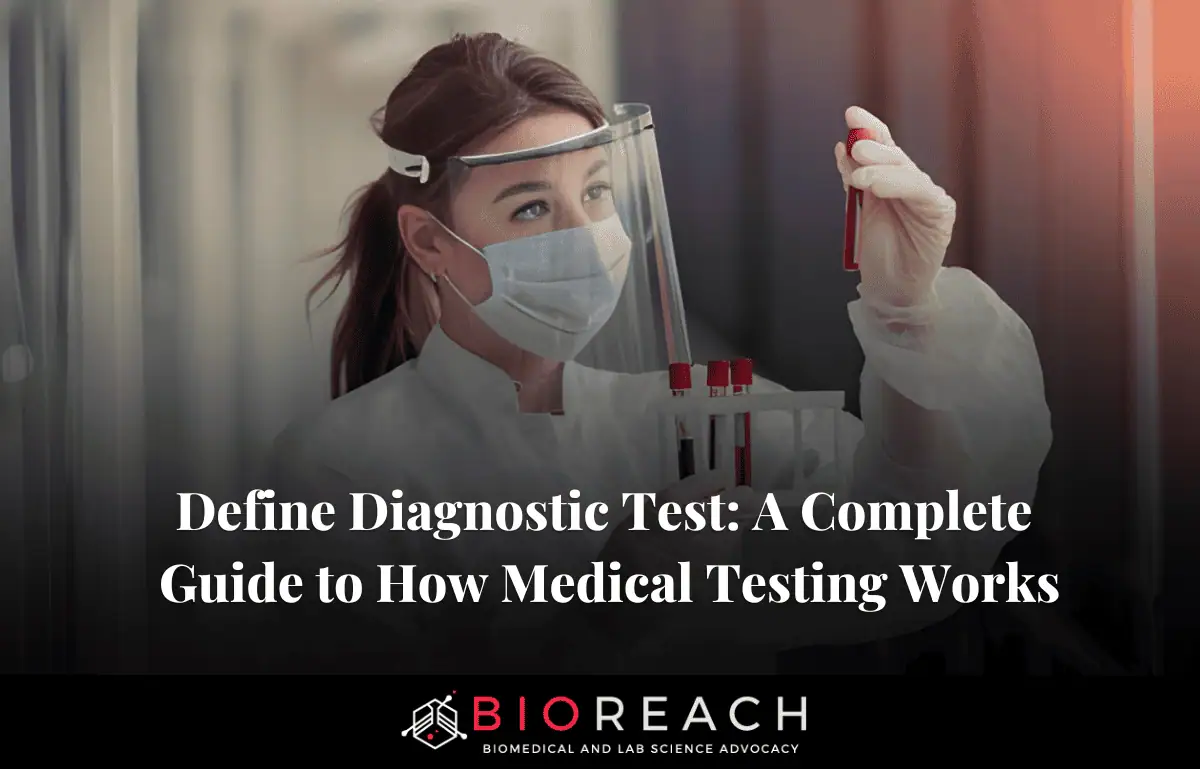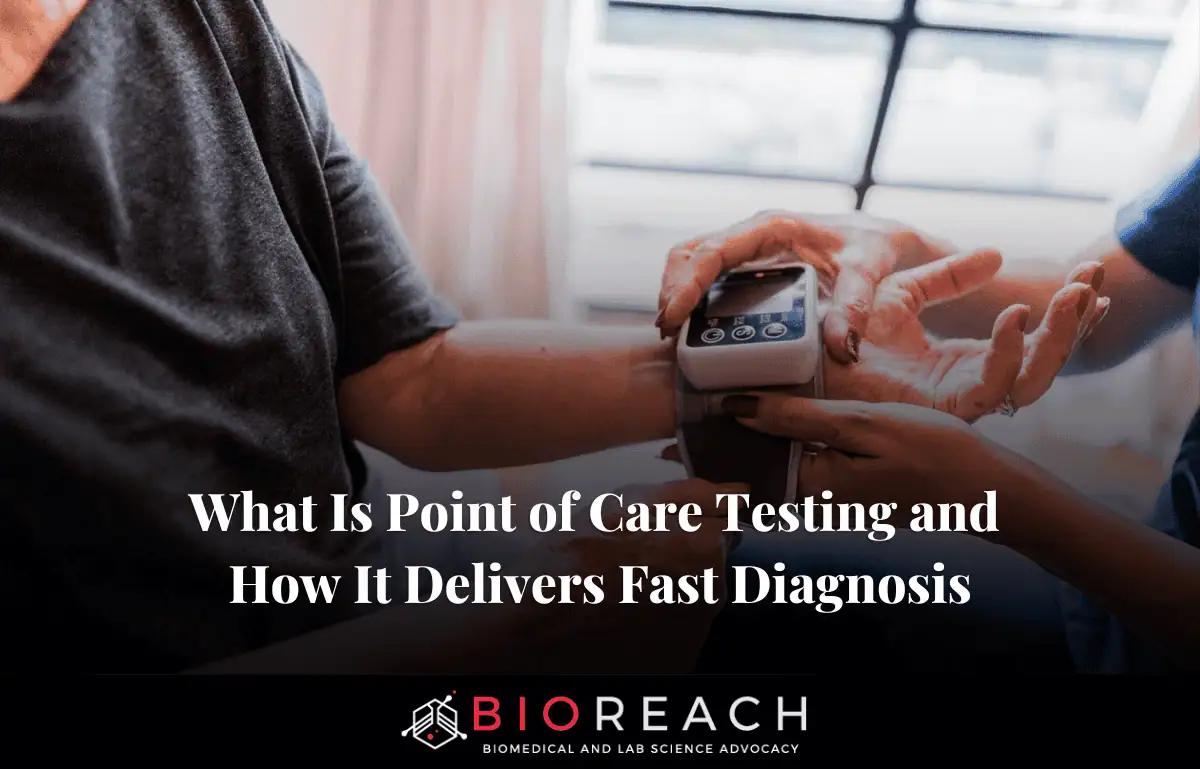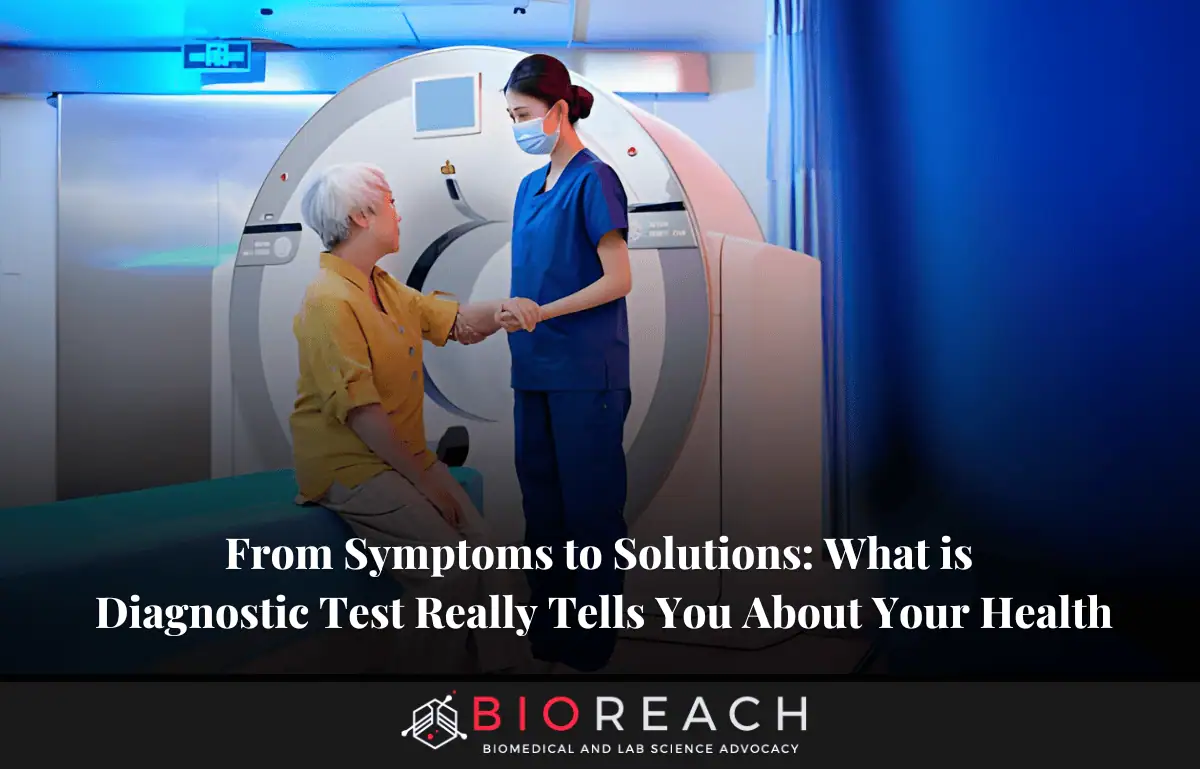Define Diagnostic Test, it’s more than just a medical phrase; it’s the foundation of how doctors uncover what’s happening inside your body. Imagine sitting in a clinic, feeling dizzy and short of breath, your heart racing. The doctor listens carefully and notes, “We need to run some tests.” But what does that really mean? To define a diagnostic test is to understand a precise, step-by-step process that examines your body’s samples or functions to pinpoint the cause of illness, confirm a diagnosis, or monitor an ongoing condition. It’s not simply a “yes” or “no” answer; it provides clear, evidence-based insights that turn uncertain symptoms into actionable treatment plans.
In 2025, diagnostic tests guide about 70% of all medical decisions. In the U.S. alone, more than 14 billion tests happen every year. Knowing how they work is no longer optional; it is empowering. This guide will explain how to define a diagnostic test. We cover history, principles, step-by-step workings, types, real-life use, interpreting results, innovations, challenges, and how patients can engage.
Whether you are a curious patient, a doctor, or a health policy fan, learning what happens in labs helps you understand your care. It ensures your tests lead to timely and life-saving solutions.
The Fundamentals: What It Means to Define Diagnostic Test
To truly define a diagnostic test, start with its purpose. A diagnostic test is a medical check designed to find, confirm, or rule out diseases. It works by analyzing samples from the body, like blood, urine, tissue, or other body functions.
Tests fall into two main types:
- In vitro diagnostics (IVDs): Done outside the body, like blood tests in a lab.
- In vivo diagnostics: Done inside the body, such as imaging scans or functional tests.
At the heart of these tests are biomarkers, measurable signs of health or disease. These include proteins, hormones, genes, or other molecules. For example, high troponin in blood signals heart muscle damage and helps confirm a heart attack.
Accuracy is key. Two main measures matter:
- Sensitivity: How well a test catches true positives. Example: A high-quality PCR test may detect 98% of actual infections.
- Specificity: How well a test avoids false positives.
Even a very specific test can give false alarms when a disease is rare. This is why doctors consider disease prevalence and overall context.
The World Health Organization (WHO) says a good diagnostic test must be reliable, reproducible, and regulated. In the U.S., over 80,000 IVDs are FDA-approved. During emergencies, such as pandemics, emergency use authorizations (EUAs) allow fast deployment of new tests.
History matters too. Diagnostic testing started in 400 BC when Hippocrates tasted urine for signs of diabetes. Microscopes in the 19th century let doctors study cells. In the 20th century, immunology and molecular biology changed the game. After COVID-19, rapid tests became widespread, boosting the global diagnostic market to $85 billion in 2025.
Today, to define diagnostic test is to see it as a bridge. It connects what a doctor suspects from symptoms to actual, evidence-based results. These results guide treatments that save millions of lives each year through early detection.
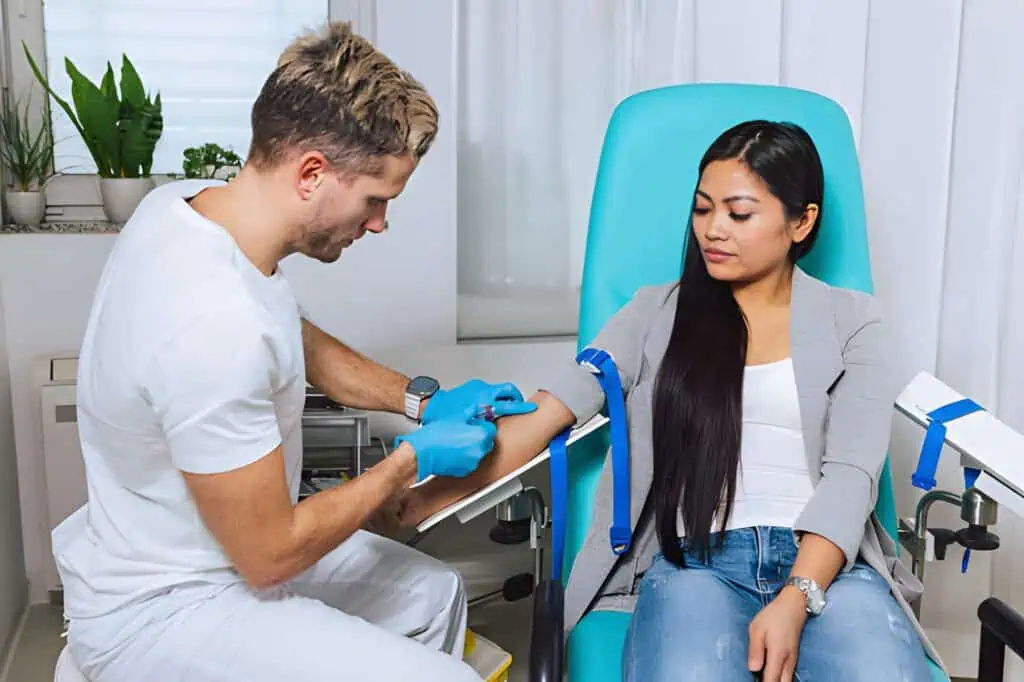
Step-by-Step: How Diagnostic Testing Works in Practice
Diagnostic testing follows a clear process. It ensures accuracy from start to finish.
1. Pre-analytical stage
It begins when your doctor evaluates your symptoms, like fever, pain, or fatigue, and orders the right tests. Patient preparation is important. For example:
- Fasting for 8-12 hours ensures correct blood sugar readings.
- Drinking enough water prevents concentrated urine that can skew kidney tests.
2. Sample collection
Next, samples are collected carefully:
- Blood is drawn by trained phlebotomists using tourniquets and tubes with anticoagulants.
- Urine samples are usually midstream to prevent contamination.
- Tissue biopsies are done with needles guided by imaging, like ultrasound.
Transporting samples safely is critical. RNA samples, for example, must be kept cold to prevent breakdown.
3. Analytical stage
In the lab, automation makes tests fast and precise:
- Spectrophotometry measures enzymes in chemistry panels.
- Flow cytometry uses fluorescent tags to sort and count cells.
- PCR (polymerase chain reaction) multiplies DNA to detect viruses in hours.
Quality checks run at the same time. Machines are calibrated, and labs must meet CLIA standards, keeping accuracy above 99%.
4. Post-analytical stage
Once analysis is done, results are added to electronic health records (EHRs). Values outside normal ranges trigger alerts. For example, hemoglobin <12 g/dL signals anemia.
Turnaround time depends on urgency:
- Critical tests, like troponin for a heart attack, return in 30 minutes.
- Genomic tests may take several days.
In 2025, AI systems flag urgent results, reducing errors by up to 40%.
This process shows that a diagnostic test is more than a lab check. It is a careful pipeline that turns raw biology into actionable health information. Each step, from ordering to result, guides doctors to make decisions that can save lives.
Categories of Diagnostic Tests: Tailored Tools for Every Scenario
Diagnostic tests come in many forms, each fitting different symptoms and medical needs.
1. Hematology tests
These include complete blood counts (CBCs):
- Red blood cells (4.5–5.5 million/µL) carry oxygen.
- White blood cells (4–11 ×10⁹/L) fight infections.
- Platelets help blood clot.
Abnormal results can point to diseases: too many red cells may mean polycythemia, and abnormal white cells may indicate leukemia.
2. Clinical chemistry
These tests check organ function:
- Basic Metabolic Panel (BMP) tracks electrolytes like sodium (135–145 mmol/L), spotting heart or kidney problems.
- Comprehensive Metabolic Panel (CMP) adds liver markers like ALT (>56 U/L flags hepatitis).
- Coagulation tests (PT/INR) monitor blood-thinning therapy to prevent strokes.
3. Microbiology tests
These detect bacteria, viruses, and fungi:
- Cultures grow bacteria to identify infection and antibiotic resistance.
- Rapid antigen tests can confirm flu or COVID in minutes.
- Immunology assays, like ELISA for HIV, detect antibodies with near-perfect accuracy.
4. Molecular diagnostics
These examine DNA or RNA:
- Next-generation sequencing (NGS) scans genes for cancer mutations like BRCA.
- Companion diagnostics match drugs to specific gene markers, e.g., HER2 tests for breast cancer therapy.
5. Imaging diagnostics
These are not sample-based but reveal structural issues:
- Echocardiograms check heart valves.
- MRIs locate tumors.
- Functional tests, like spirometry, measure lung capacity.
- Hybrid tests, like PET-CT, combine imaging for precise cancer staging.
Each type of test is a tool for a specific clinical need. Together, they define a diagnostic test as a versatile, symptom-focused tool that helps doctors find the right answers.

Technological Innovations: Redefining Diagnostic Testing in 2025
Technology is changing how diagnostic tests work. In 2025, AI is everywhere. Systems like Google’s DeepMind can spot issues in scans faster than humans. Wearables, like the Apple Watch, track heart rhythms and alert doctors to problems like arrhythmias before emergencies occur.
CRISPR-based tests detect pathogens with high precision. Kits like Mammoth’s DETECTR can quickly identify viruses using tiny DNA changes. Organ-on-chip models test drugs safely on tissue samples before human trials.
Nanotechnology sensors can detect biomarkers in breath, spotting lung cancer early. Blockchain protects patient data, making remote testing secure.
At-home testing has grown. FDA-approved NGS kits let people send saliva samples to labs to check hereditary risks. Quantum sensors promise to detect molecules at ultra-low levels. Multi-omics platforms combine genomics, proteomics, and other data to predict health outcomes.
These advances make diagnostic tests faster, smarter, portable, and predictive. Patients and doctors can act before symptoms worsen, turning testing into prevention rather than just detection.
Challenges and Limitations: The Hurdles in Accurate Diagnostics
Despite progress, problems remain. Access gaps are wide: rural U.S. patients may wait a week, and in low- and middle-income countries (LMICs), 50% of essential tests are missing, per WHO.
Costs are high. Some genomic tests exceed $1,000, burdening millions of uninsured people. Overuse is common; around 30% of tests are repeated unnecessarily.
Errors still happen. About 1 in 300 results are wrong due to sample mishandling. Standards vary across labs, confusing. Ethical dilemmas arise in genetic testing, revealing family risks. AI bias can misdiagnose people with darker skin tones.
Regulatory delays can slow new tests. Extreme weather and climate affect sample stability, especially RNA in hot regions.
Solutions include value-based care, which focuses on testing only when needed, global funding to improve access, and better training to address workforce shortages.
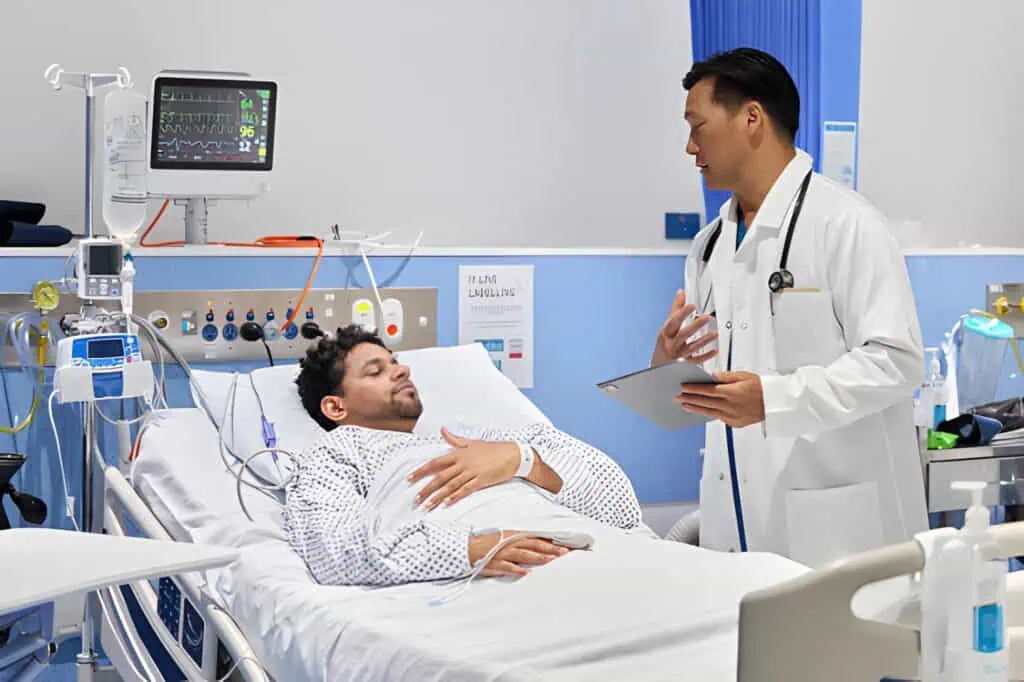
Patient Empowerment: Navigating Your Diagnostic Journey
Patients can take active roles in their care. Ask your provider: “How does this test relate to my symptoms?” Follow preparation instructions carefully, fast if needed, and log medications.
Track results in apps like HealthKit or MyChart. Question results: “What counts as abnormal?” Advocate for follow-up tests when needed. Join research registries for rare conditions.
In 2025, VR simulations will help patients learn how tests work. Resources like Lab Tests Online explain over 1,000 types of assays. HIPAA gives patients the right to see results quickly and request corrections. Getting second opinions is encouraged.
Patient involvement transforms diagnostic tests from a mysterious step into mastery over your health.
Future Horizons: Evolving Definitions of Diagnostic Testing
By 2030, diagnostic tests may become fully ambient. Smart mirrors and home devices could monitor gait, heart rate, or Parkinson’s symptoms automatically.
Synthetic biology may allow self-testing implants. Global networks could monitor disease outbreaks in real time. Portable labs will expand access in LMICs. Policies will support AI-driven tests, and sustainability initiatives will reduce lab waste.
The future defines diagnostic tests as preventive, universal, and integrated into daily life.
Conclusion
To define diagnostic test is to understand one of medicine’s most powerful tools. These tests read your body’s signals, from tiny cellular changes to overall system function. This guide explained how tests work, their applications, innovations, and challenges.
Diagnostic testing gives precise, personalized care. It saves lives through early detection and empowers patients to partner with providers. By asking questions, preparing well, and tracking results, you turn tests into tools for better health.
In 2025 and beyond, diagnostic tests offer clarity. Symptoms are signals. Solutions are within reach. Stay informed, stay proactive, and let science guide your journey to wellness.

